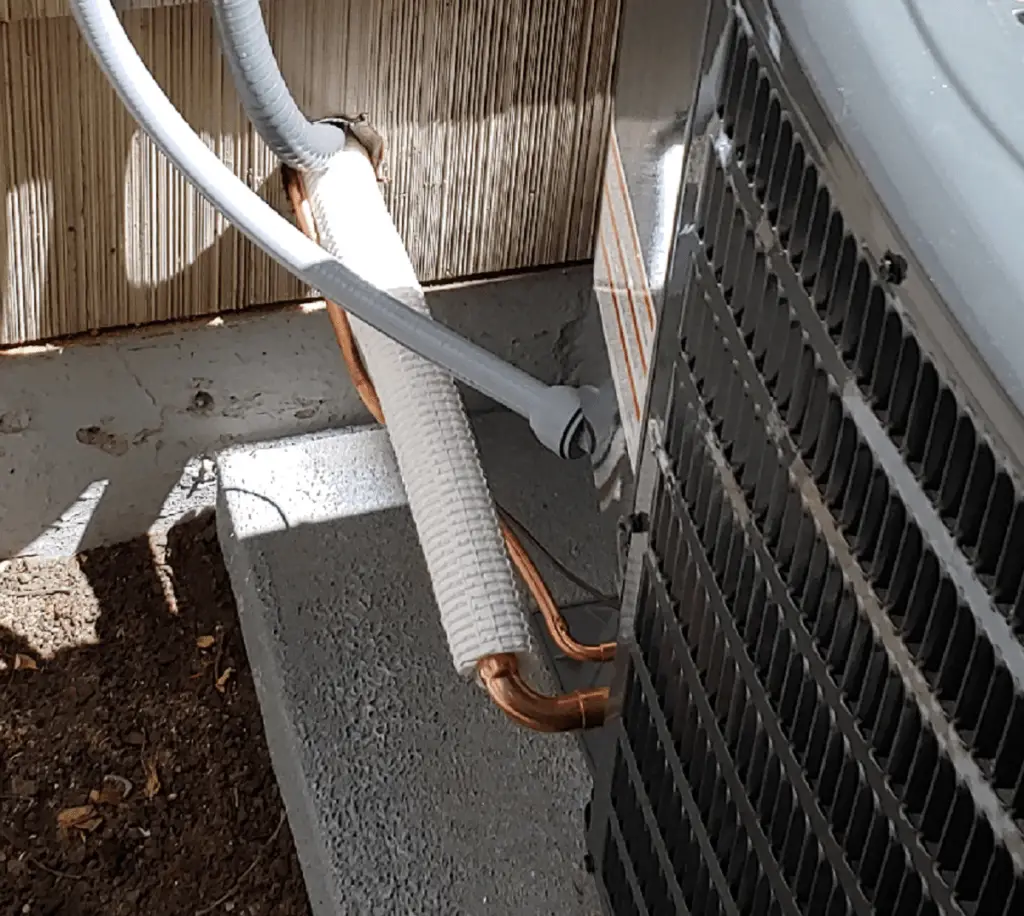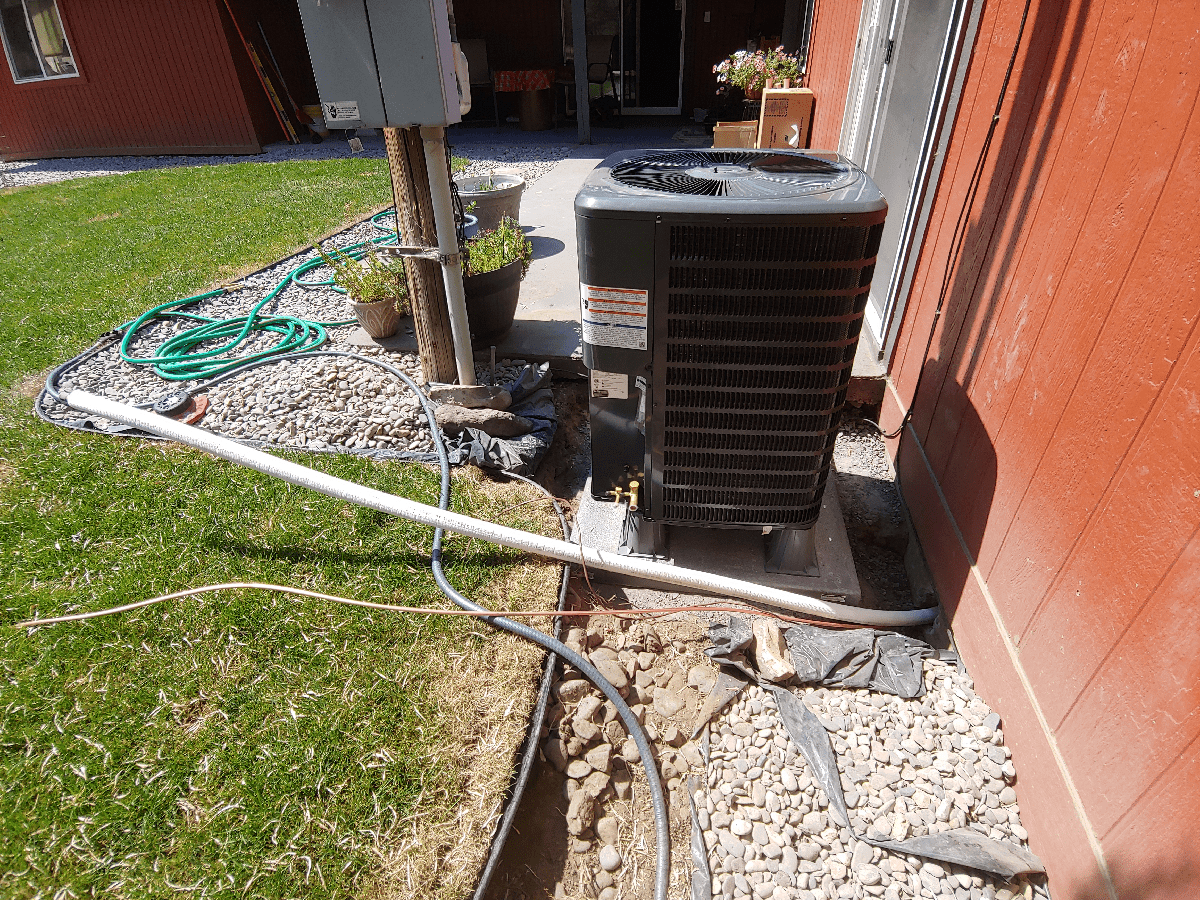Line sets for air conditioners and heat pumps should always be evacuated to remove moisture and contaminates before charging with refrigerant (Freon). The process is simple and straight forward. Many manufacturers recommend triple evacuation. Each evacuation should be followed by purging with nitrogen.
(Note that pre charged line sets should not be evacuated, they are charged with refrigerant and ready to be connected with quick connects at each end of the line set.)
With that aside, what is recommended and what is done are two completely separate things. Like mentioned, drawing a vacuum on a line set, or a complete system, is done to remove moisture and contaminates from the sealed system. The sealed system is all the copper tubing, coils, and components including the compressor, that hold refrigerant.

For new systems, the air conditioning units themselves come pre charged from the factory and it’s only necessary to draw a vacuum on the line set and the indoor coil.
I admit to not triple evacuating my systems. I’ve never had the issues that are rumored that result from not doing so. I’m extremely careful and treat the process much like an operating room. I never put a system together in a rain or wind storm and I always use filter dryers. Filter dryers will collect whatever I may miss, which isn’t much.
I’ve seen a lot of sloppy work. Technicians that transport line sets with unprotected (open) ends that could allow dirt or bugs and who knows what to somehow get into the copper tubing. Putting a line set under vacuum will not remove anything more than moisture and non condensables. It won’t get the bugs out.
Those non condensables would be mostly air and nitrogen. The air we breath is 78% nitrogen, 21% oxygen, and 1% something we probably don’t want to know about. When welding line sets we introduce nitrogen into the lines to prevent carbon from contaminating the inside of the line.
Oxygen burns and causes carbon to form inside the line sets and carbon is an enemy to the synthetic oils contained in compressors that use the current R-410A refrigerant.
What Will Moisture Inside A Line Set And Refrigeration System Cause?
This can get very technical because it involves what goes on inside a refrigeration system. To keep it simple lets just say that in certain areas inside a cooling system the temperatures can reach temperatures at or below 32 degrees.
With moisture or water inside the system, at that freezing temperature it will cause blockages to the flow of refrigerant and oil inside the piping and components of the system which will completely disable the system to cool your home.
The synthetic oil that lubricates the compressor and migrates with the refrigerant throughout the inside of the piping will eventually turn into acid and a gooey sludge. Your compressor will lack lubrication and die an early death.
Is There A Cure For Acid And Sludge Inside My Line Set And System?
The best cure for acid and sludge inside a refrigeration system is proper and periodic maintenance. A good technician will test your system using an acid test kit. QwikProducts makes a simple test kit that takes seconds to use and determine if any acid is growing or developing inside your expensive investment.
This test kit is not expensive either. No excuse not to have your system checked, yearly. If any acid is detected, it’s a matter of injecting an acid remover or neutralizer. If you keep up on your maintenance you should still be able to experience years of reliable service.

